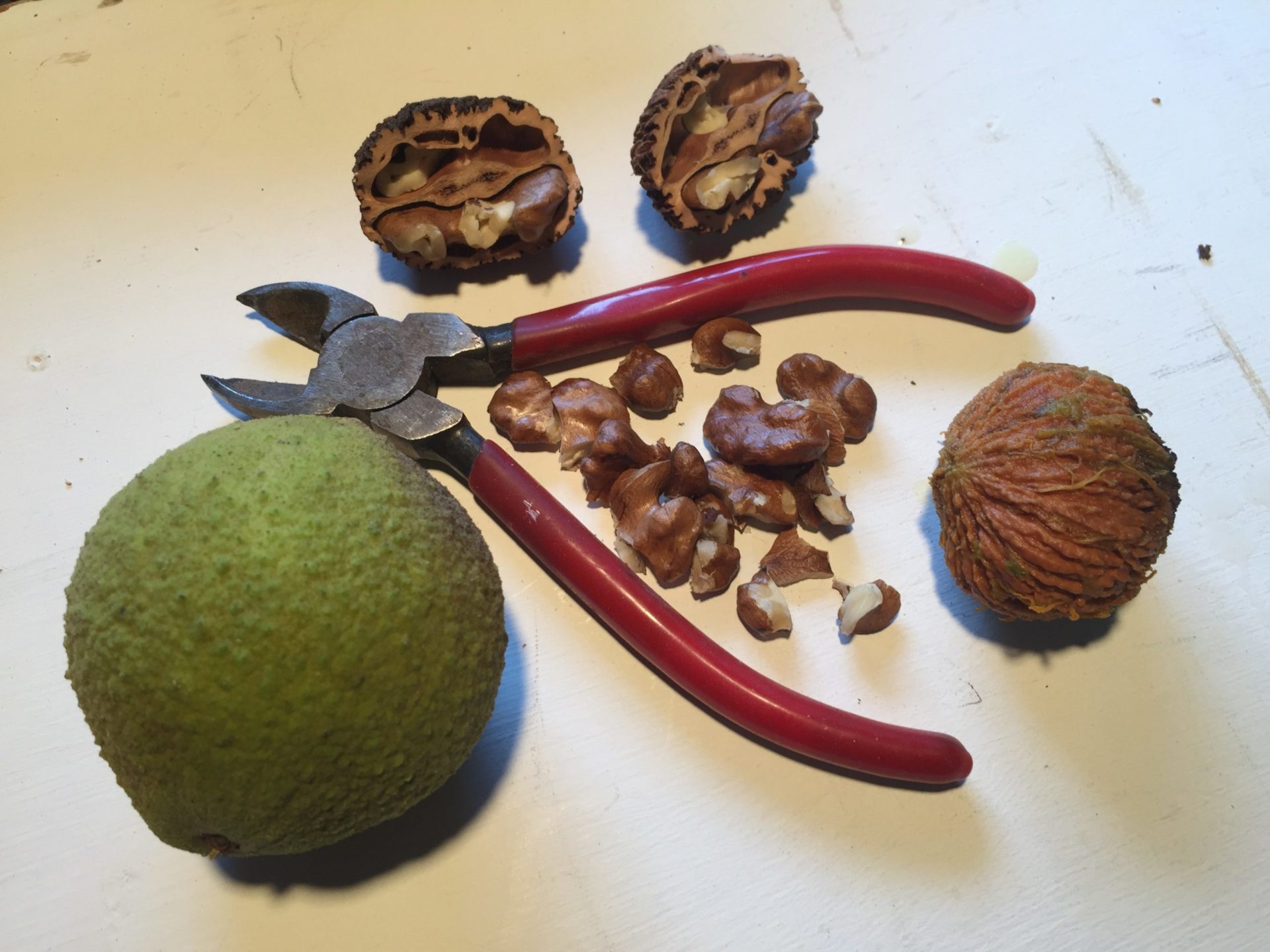By R. Wayne Mezitt
Intrigued by learning about the potential value of its timber, I first began growing Eastern black walnut (Juglans nigra) in my yard more than 50 years ago. I enjoyed working with wood and appreciated how walnut’s distinctive color and grain patterns could be readily fashioned into such a wide variety of objects.
Prized by woodworkers around the world, 30-40 year-old black walnut trees commonly attain a girth of more than two feet and have been in good demand by sawmills, reportedly yielding thousands of dollars per acre. I planted lots of seed and grew dozens of trees, but failing to invest the time and effort to grow the “perfect” tree, never achieved such fabulous returns from my amateur endeavors.
Fortunately black walnut offers other features that make it an interesting tree to have around my yard. Shelled black walnut “meats” have a distinctive, rich, strong earthy flavor, much more intense than the more familiar and milder-tasting English walnut we find in the grocery store. But be aware: they’re not so easy to crack and shell!
In October the distinctive fruit drops to the ground, ripe for harvest (by me or the squirrels). Each nut is fully-clothed in a thick, fragrant, pulpy husk; it’s wise to remove the nut from the just-fallen fruit rather than waiting for the hull to decompose to turn a slimy black color. I stomp the fibrous green husk with my boot (or drive my vehicle over an assembled group) to extract the nut, and then tumble with its sisters in a bucket of water to clean. After a couple of rinses, spread out the nuts to dry for a few days and they’ll be ready to plant-out, or crack. Substances in the hull will seriously stain your hands, so be sure to wear rubber gloves when handling the husks.
To get at the kernel I use a hammer on a hard surface to gently fracture, without blowing it apart, the tough shell. I then use a modified wire-cutter hand-tool with a small notch in the tip to nibble-away at the shell sections to release the kernel; be sure to protect your eyes from flying shell pieces! I never get a full half-kernel, but the smaller pieces are great for cooking and recipes. And be extra careful to remove every piece of shell: ground-up black walnut shells are used as an industrial abrasive and it’s disconcerting to bite into even a tiny piece!
Black walnut grows rapidly to become a large, coarsely-branched shade tree, casting dappled shade. The chemical juglone produced by its roots, hulls and leaves can inhibit the growth of nearby sensitive plants like tomato, blueberry, rhododendron and lilac. But I see a surprising number of black walnut seedlings “volunteering” in my gardens, forgotten by the squirrels who cached them for winter consumption. They’re not easy to pull out, particularly when germinated next to a desirable viburnum or crabapple, requiring a spade to lift their deep taproot. Dug before they leaf-out in spring, they can be readily transplanted where you want them to grow.
Timber, shade and nuts: perhaps some good incentives to try growing black walnut in your yard?








